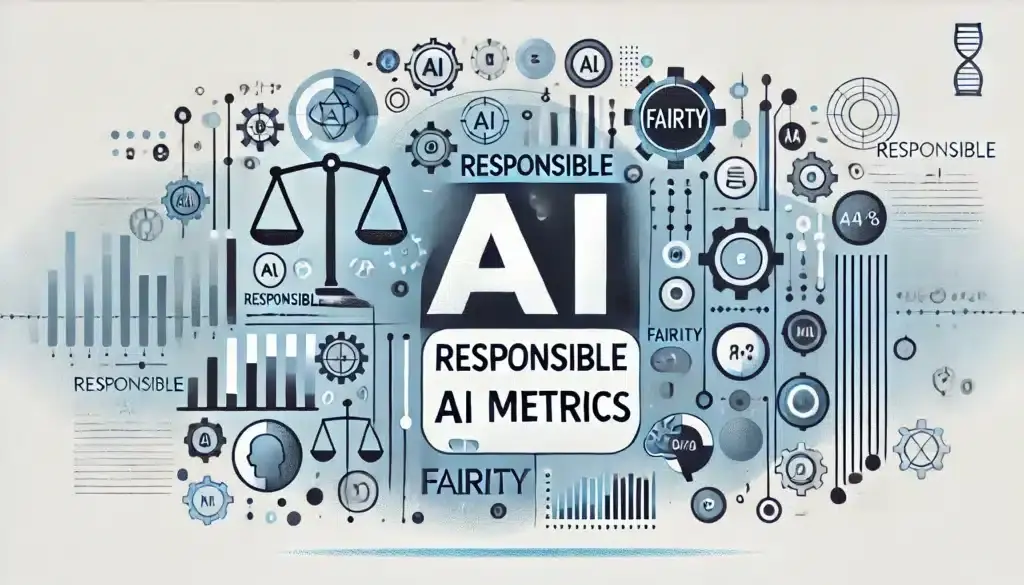Section 1 - Why Debugging Is the Real Test of ML Maturity
There’s a reason top-tier ML interviewers love to throw you “broken system” problems.
They’re not trying to make you fail; they’re trying to see how you think when things fail.
Machine learning interviews have evolved far beyond model tuning or metric optimization.
At companies like Google, Meta, OpenAI, and Netflix, technical interviewers increasingly care less about whether your model achieves 0.91 AUC and more about how you respond when it suddenly drops to 0.52 and you have no idea why.
“Debugging is the purest form of thinking out loud, it’s where engineering meets composure.”
a. Debugging Is a Window into Your Mind
When you’re given a problem like “the model accuracy fell after deployment,” the interviewer isn’t just checking your technical literacy.
They’re evaluating how you reason under uncertainty, how you form, test, and communicate hypotheses.
In other words, debugging questions aren’t technical puzzles; they’re psychological mirrors.
Candidates who thrive in debugging rounds tend to display three habits that instantly set them apart:
- They narrate calmly.
They don’t panic or go silent. They articulate what they’re checking and why.
(“Let me first verify if the data split changed, that often causes drift.”) - They reason hierarchically.
They don’t shotgun guesses. They test the highest-probability causes first.
(“If this issue appeared after retraining, I’d start by checking preprocessing and data schema.”) - They close loops.
They summarize conclusions before moving on.
(“That eliminates preprocessing as a cause, so next I’ll inspect the model checkpoint.”)
Interviewers listen for this structure, not the specific words, but the mental clarity behind them.
b. Why Debugging Has Become Central to ML Interviews
Five years ago, ML interview prep revolved around math and modeling, hyperparameters, regularization, and feature importance.
Now, the industry has shifted toward production-grade intelligence.
Models live in ecosystems, and those ecosystems break in invisible ways, making debugging the new differentiator.
There are three reasons for this shift:
- Production ML is non-deterministic.
ML systems break for subtle, probabilistic reasons, not missing semicolons.
Interviewers know that debugging reflects how you deal with real-world uncertainty. - Debugging reveals system-level thinking.
Candidates who can debug data drift, leakage, or schema mismatches demonstrate end-to-end ownership, from data pipelines to deployment.
That’s exactly what modern ML roles require. - Debugging tests cognitive empathy.
When you narrate your process clearly, you’re not just solving, you’re collaborating.
And collaboration is one of the strongest predictors of success in cross-functional ML teams.
So, when an interviewer asks:
“The model is overfitting after a recent retraining; how would you investigate?”
They’re not grading your final answer.
They’re grading your journey to the answer.
Check out Interview Node’s guide “The Hidden Metrics: How Interviewers Evaluate ML Thinking, Not Just Code”
c. Debugging Is About Systems, Not Symptoms
The best ML engineers know that debugging doesn’t start at the symptom, it starts at the system.
Let’s say your interview prompt is:
“Your model works locally but performs poorly in production.”
A junior engineer might say:
“Maybe there’s a data bug or wrong checkpoint.”
A senior engineer would say:
“Let’s trace the system end-to-end, from data ingestion to model versioning and serving.
If the data pipeline or feature transformation changed post-deployment, the issue may not be in the model at all.”
That one answer communicates three things:
- You understand system boundaries (where the bug could hide).
- You prioritize traceability over guesswork.
- You remain calm and methodical under pressure.
Debugging is not about finding the bug, it’s about showing that you know where bugs live and how systems behave when they fail.
d. Debugging Separates Builders from Maintainers
There’s a common misconception in interviews that great ML engineers are the ones who build complex architectures.
But hiring managers know the truth: the best engineers are those who can maintain intelligence over time.
That means:
- Diagnosing why models fail after retraining.
- Identifying how drift or schema changes break inference.
- Detecting silent data leaks before they hit production.
When you debug effectively in an interview, you’re proving that you can own the reliability of an ML system, not just its accuracy.
As one Meta ML manager put it:
“Anyone can build a model that works once. The real engineers build models that keep working.”
e. The Debugging Mindset: Calm, Curious, and Structured
In high-pressure ML interviews, panic is your enemy and curiosity is your ally.
Candidates who debug well tend to speak like scientists, not firefighters.
Here’s how they naturally sound:
“Hmm, accuracy dropped. That could be data drift, so I’ll visualize feature distributions.
If drift looks stable, I’ll move to model hyperparameters or version mismatches.
Let’s test one variable at a time.”
They’re not rushing; they’re thinking with narrative clarity.
This calm reasoning is deeply reassuring to interviewers.
“Debugging reveals how an engineer thinks when no one’s giving them instructions.”
When your reasoning is clear, you not only fix the bug, you inspire confidence.
Section 2 - How to Structure Your Think-Aloud Debugging Process
Imagine this:
You’re in the middle of a machine learning interview.
The interviewer says,
“Your model’s validation accuracy suddenly dropped from 0.88 to 0.65 after retraining. What’s the first thing you’d check?”
Most candidates freeze.
Some jump straight into solutions (“Maybe the data changed?”).
Only a few pause, think aloud, and start with structure:
“Let’s break this down step by step, first, I’ll clarify what exactly changed, then I’ll hypothesize potential causes across data, model, and deployment. After that, I’ll test each hypothesis systematically.”
That single sentence can earn more points than 10 lines of code.
Because debugging in ML interviews is not a speed test, it’s a clarity test.
“Strong candidates don’t just fix problems, they teach interviewers how they think.”
The 5-Step Debugging Framework for ML Interviews
Let’s unpack the structure that top ML engineers use to think out loud with precision and calmness.
Check out Interview Node’s guide “Common Pitfalls in ML Model Evaluation and How to Avoid Them”
Step 1 - Clarify the Context
When an interviewer presents a debugging scenario, never jump in blind.
Start by understanding what’s actually happening.
Your first words should not be a fix; they should be a clarification:
“Before I dive in, could you confirm what kind of issue this is, performance degradation, code failure, or data inconsistency?”
Why this works:
- It shows systems thinking, you’re not assuming where the problem lies.
- It gives you precious seconds to organize your thoughts.
- It demonstrates confidence through composure.
If the interviewer doesn’t specify, define the context yourself:
“Just to structure my thoughts, I’ll assume this is a model performance issue post-deployment, and I’ll focus on what might have changed between training and production.”
That single sentence signals ownership, you’re driving the conversation, not reacting to it.
Step 2 - Restate the Problem in Your Own Words
Restating serves two purposes:
- It confirms you understood correctly.
- It buys time to reason out loud.
Example phrasing:
“So, the issue is that after retraining, validation accuracy dropped significantly. That suggests either data quality shifted or some change in preprocessing or hyperparameters impacted model generalization. Is that correct?”
Why this helps:
Interviewers interpret restatement as structured cognition, it shows you think in hypotheses, not panic.
If you’re unsure about constraints, restate assumptions explicitly:
“I’ll assume the code still runs correctly, and we’re focusing purely on performance degradation.”
Structured restatements make you sound methodical, like someone who leads debugging sessions at work, not just participates in them.
Step 3 - Generate Hypotheses
This is where most candidates either shine or stumble.
Weak candidates guess randomly.
Strong candidates categorize their guesses.
Use a “three-bucket” approach:
| Category | Possible Causes |
| Data Issues | Drift, leakage, missing values, incorrect labeling, schema mismatch |
| Model Issues | Overfitting, wrong regularization, unstable learning rate, model checkpoint error |
| Pipeline Issues | Preprocessing mismatch, dependency versions, scaling differences, caching problems |
Then verbalize your reasoning hierarchy:
“Given that this issue happened after retraining, I’d first investigate data consistency, then training configuration, and finally deployment.”
That logical progression tells interviewers:
- You think probabilistically.
- You respect the order of likelihood.
- You don’t guess wildly, you triage intelligently.
Interviewers often comment after the round,
“They sounded like they’d debugged hundreds of pipelines.”
That impression alone can get you hired.
Step 4 - Test One Hypothesis at a Time
This is where composure becomes your advantage.
Instead of saying,
“Maybe it’s the data or maybe the model is overfitting,”
say,
“Let’s start by testing whether the data has drifted. I’d compare the feature distributions between training and validation sets. If they look stable, I’d move to check model configuration differences.”
Interviewers don’t need you to be right, they need you to be disciplined.
They’re assessing if you can test hypotheses like a scientist, not a gambler.
If you’re in a coding interview, narrate your diagnostic process:
“I’d add a quick check here to compare label distributions… okay, if they’re consistent, that rules out target shift. Next, I’d verify preprocessing normalization parameters.”
Even partial reasoning earns points.
Silence loses them.
“In ML debugging, explaining your approach clearly is worth more than finding the exact bug.”
Check out Interview Node’s guide “How to Discuss Data Leakage, Drift, and Model Monitoring in ML Interviews”
Step 5 - Communicate Conclusions Clearly
Once you’ve isolated a likely cause, don’t rush to the fix.
Summarize your reasoning chain first:
“It looks like the issue traces back to inconsistent feature scaling between training and inference pipelines. Retraining with aligned normalization parameters should restore performance.”
Why this works:
- It demonstrates synthesis, the ability to connect cause and effect.
- It leaves the interviewer with a clear narrative of how you reasoned.
Many senior interviewers explicitly score candidates on clarity of summary, not just correctness.
And if you haven’t found the exact cause?
That’s fine, just close gracefully:
“Given the limited context, my top two hypotheses would be feature drift or version mismatch. I’d validate each by checking the feature pipeline logs and training configurations.”
That ending line conveys analytical maturity, the understanding that debugging is an ongoing process, not a one-shot guess.
Bonus: The Meta-Level Narration Pattern
Top-tier ML candidates often use this “meta-narration loop” during interviews:
- State intent: “I’ll start by checking data consistency.”
- Perform action: “The label distribution looks uniform.”
- Reflect: “Okay, that rules out imbalance-next, I’ll check feature scaling.”
It’s calm, controlled, and deeply professional.
“Meta-narration turns a debugging session into a demonstration of leadership.”
Section 3 - Common Debugging Mistakes (and How to Avoid Them)
When interviewers debrief after an ML interview, one of the most common notes you’ll hear is:
“They had good technical knowledge, but their debugging felt chaotic.”
In other words, most candidates don’t fail debugging questions because they lack skill.
They fail because they lack structure, self-awareness, and communication control.
Debugging in ML interviews isn’t just about knowing what to check, it’s about demonstrating how you think when things go wrong.
This section breaks down the five most common mistakes candidates make, and exactly how to fix each one.
a. Guessing Before Reasoning
The biggest red flag for interviewers is impulsive guessing.
It usually sounds like:
“Oh, it’s probably overfitting.”
“Maybe the learning rate’s too high.”
This kind of shotgun response signals that you’re diagnosing emotionally, not scientifically.
And in ML systems, where problems stem from subtle pipeline interactions, that’s dangerous.
The right move is to slow down.
Even if you already suspect the cause, narrate your reasoning chain first.
✅ Instead, say:
“Let’s reason through potential causes step-by-step.
Since the issue occurred after retraining, I’ll first check whether data consistency changed, feature distributions, missing values, or schema mismatches, before jumping into model hyperparameters.”
This phrasing is calm, methodical, and thoughtful, all signs of maturity.
“In ML interviews, patience is the new speed. The best debuggers pause before they act.”
b. Tunnel Vision on the Model
Many candidates focus entirely on the model, its architecture, loss, or parameters, and forget that 80% of real-world ML failures come from data or pipeline issues.
Example of tunnel vision:
“I’d tune dropout or regularization, maybe the model’s overfitting.”
Interviewers interpret that as a lack of systems thinking.
Instead, broaden your lens:
✅ Say this instead:
“Before touching model hyperparameters, I’d verify that the training data hasn’t changed distributionally and that preprocessing steps are consistent between training and inference.
Once data integrity is confirmed, I’d look into overfitting or learning rate decay.”
You just displayed root-cause prioritization, the ability to check system foundations before fine-tuning model specifics.
Bonus tip: referencing “data drift,” “feature scaling,” or “temporal leakage” shows depth and awareness of production ML.
c. Silence Under Stress
This is the most fatal behavioral mistake, and one of the easiest to fix.
When candidates go silent for 30–40 seconds, interviewers assume they’re stuck, panicked, or lost, even if they’re thinking deeply.
Debugging, by nature, is exploratory. But in an interview, exploration must be audible.
You don’t need to talk constantly. You just need to narrate milestones in your reasoning.
✅ For example:
“I’m just checking whether this could be a preprocessing mismatch. If not, I’ll move on to evaluating data drift. Let’s verify that first…”
This light narration:
- Shows you’re engaged and structured.
- Buys you time to think.
- Turns internal reasoning into collaboration.
Even if you pause, use bridging phrases like:
“Let me think through that step carefully, it might be a data-related issue.”
It sounds confident, deliberate, and human.
“Silence in debugging reads as panic. Thoughtful narration reads as mastery.”
Check out Interview Node’s guide “The Psychology of Interviews: Why Confidence Often Beats Perfect Answers”
d. Overcomplicating Simple Problems
A classic mid-senior trap: overthinking.
You detect an issue, and instead of starting simple, you dive into gradient clipping, advanced architectures, or obscure optimizer settings.
The problem?
Interviewers assume you can’t prioritize, or worse, that you don’t debug in stages.
Real ML engineers start with the simplest possible explanation first.
✅ A better way:
“Before diving into complex tuning, I’d start with simple verification, confirming data preprocessing consistency, checking for nulls, and verifying random seed reproducibility.”
This approach signals composure. You’re not panicking. You’re filtering noise from signal.
Another example:
Instead of jumping to “Maybe the learning rate scheduler caused catastrophic forgetting,”
start with,
“Let’s ensure the training data schema hasn’t changed. If that’s stable, I’ll dig deeper into the optimizer dynamics.”
That kind of layered reasoning instantly differentiates you.
“Debugging like a pro is knowing what not to complicate.”
e. Failing to Conclude
This one’s subtle but costly.
You’ve just spent 5 minutes analyzing possible causes, then stop. No summary. No closure.
Interviewers are left thinking:
“Did they actually find the issue?”
Strong candidates always wrap up with synthesis.
✅ Use this formula:
“Given the checks we’ve discussed, the most likely issue is inconsistent scaling between training and inference.
I’d confirm by inspecting transformation logs and retraining with aligned preprocessing.”
Even if you don’t find the exact answer, close confidently:
“If that’s not the root cause, the next diagnostic step would be comparing production and training data statistics to rule out drift.”
That ending turns an unfinished investigation into a methodical framework.
“In interviews, closure is clarity. Always leave the room knowing your reasoning story is complete.”
Check out Interview Node’s guide “Behavioral ML Interviews: How to Showcase Impact Beyond Just Code”
Section 4 - Real ML Debugging Scenarios (and Sample Responses)
If the previous sections explained how to think, this one shows how it sounds.
Because in ML interviews, your debugging ability isn’t measured by how fast you find the issue, it’s measured by how clearly you reason while you search.
Debugging questions are where the “think out loud” technique really shines.
Let’s go through a few realistic scenarios and see how to handle each with clarity, structure, and authority.
Scenario 1 - The “Sudden Accuracy Drop” Problem
Interviewer: “Your classification model performed with 0.89 accuracy last week. After retraining on new data, it dropped to 0.62. What do you do?”
Most candidates panic and say, “Maybe the model overfit,” or “Maybe the data changed.”
Both are valid, but too vague.
A strong response builds a hypothesis chain:
✅ You:
“Let’s approach this systematically. Since accuracy dropped post-retraining, my first step would be to compare the data distributions between the old and new training sets.
I’d check for drift, especially in categorical features, and verify that preprocessing and feature encodings remain consistent.
If data looks stable, I’d review hyperparameters or learning rate schedules for unintentional changes.
Finally, I’d confirm that evaluation metrics are being calculated consistently.”
Why this works:
- You’re narrating hypotheses in order of likelihood.
- You’re anchoring your reasoning in reproducible diagnostics.
- You sound in control, not reactive.
You could even close with:
“If the issue turns out to be drift, I’d use model monitoring tools like Evidently AI or custom data validation checks to prevent similar regressions.”
Scenario 2 - The “Good Validation, Bad Production” Mystery
Interviewer: “Your model’s validation metrics look great, but once deployed, real-world performance tanks. What could be going wrong?”
This is one of the most common, and most revealing, ML debugging questions.
A weak candidate guesses:
“Maybe there’s a bug in production?”
A strong candidate thinks systemically:
✅ You:
“This kind of mismatch typically points to inconsistencies between training and inference pipelines.
I’d first check if the same preprocessing transformations, like normalization, encoding, and feature scaling, are being applied identically at inference time.
I’d also check for feature availability: sometimes features used during training aren’t present or are delayed in production.”
Bonus layer:
“If it’s a time-series or streaming model, I’d verify temporal alignment, ensuring we’re not unintentionally leaking future information into training.”
That answer signals real-world deployment experience, something senior interviewers instantly recognize.
Check out Interview Node’s guide “End-to-End ML Project Walkthrough: A Framework for Interview Success”
Scenario 3 - The “Silent Pipeline Failure”
Interviewer: “A daily retraining pipeline suddenly starts producing empty model artifacts, but logs don’t show errors. What do you check?”
This question tests technical composure under ambiguity.
✅ You:
“If the pipeline runs but outputs are invalid, I’d start by checking upstream data integrity, maybe the daily data partition is missing or incomplete.
Next, I’d inspect data transformations, schema mismatches or unexpected nulls can propagate silently.
If data checks out, I’d review dependency versions. A recent library update (say, pandas or PyTorch) might have changed serialization behavior.”
That’s a gold-standard answer: concise, structured, and operationally credible.
To sound senior-level, you can finish with:
“I’d also confirm whether our monitoring system catches null metrics. A good ML pipeline should fail loudly, not silently, so I’d propose adding validation gates before model export.”
That last line shows ownership, you’re not just fixing the bug, you’re improving the system.
Scenario 4 - The “Perfect Accuracy, Zero Usefulness” Trap
Interviewer: “You’ve built a model that scores 100% accuracy on validation data, but performs terribly in the real world. What happened?”
This is the classic data leakage test.
✅ You:
“Perfect validation accuracy usually signals data leakage, where future or target-dependent information accidentally enters the training set.
I’d start by inspecting features for target correlations, for instance, features that depend on the outcome variable.
Then I’d check temporal splits. If data isn’t chronologically separated, future information may be leaking into the training set.”
You can extend this with:
“Finally, I’d validate feature engineering code for subtle bugs, like applying standard scalers before splitting the dataset. That’s a common cause of leakage.”
Why this answer works:
It’s detailed but calm, showing you recognize the symptom (unrealistically high accuracy) and trace it to the systemic cause (information contamination).
You could even close with a reflection:
“Leakage bugs are why I always simulate real-time inference conditions before final evaluation.”
Scenario 5 - The “Model Works Locally, Fails in Deployment” Case
Interviewer: “Your model performs well on your laptop but fails when deployed on the cloud. What do you suspect?”
✅ You:
“I’d first check environment parity, are the same library versions used in both environments?
Then I’d inspect serialization, maybe the model was saved in one format (e.g., joblib) and loaded differently.
I’d also confirm that the inference environment’s preprocessing functions and dependencies are identical.
Finally, I’d test resource constraints, GPU vs CPU differences can subtly alter floating-point computations.”
This shows that you think like an ML systems engineer, not just a data scientist.
Bonus closer:
“To prevent such discrepancies, I’d containerize the environment with Docker and define dependencies in a requirements file to ensure reproducibility.”
That’s a power move, it tells the interviewer you debug through prevention as much as correction.
Check out Interview Node’s guide “MLOps vs. ML Engineering: What Interviewers Expect You to Know in 2025”
Conclusion-Debugging Is Thinking in Public
The secret to great ML interviews isn’t perfection, it’s composure.
Debugging is where interviewers truly see how you think, prioritize, and communicate under pressure.
Every “broken pipeline” or “mystery accuracy drop” question is an invitation to reveal your system reasoning and mental discipline.
When you slow down, narrate your thought process, and connect symptoms to causes, you show more than technical skill, you show maturity.
“Debugging isn’t about finding the bug.
It’s about showing that you can build systems that won’t break the same way twice.”
The best candidates approach debugging like scientists: they form hypotheses, test them systematically, and summarize results clearly.
They don’t panic. They pause. They reason, communicate, and collaborate, and that’s exactly what ML leaders look for.
So, next time you face a debugging question, remember:
🧩 You’re not being tested on correctness, you’re being evaluated on clarity.
🧭 You’re not fixing, you’re leading reasoning.
💡 You’re not just a coder, you’re an engineer who keeps models reliable.
Top FAQs
1. Why do interviewers include debugging questions in ML interviews?
Because debugging reveals your thinking process under uncertainty. It helps interviewers see if you can isolate problems logically, communicate clearly, and maintain composure, key traits for production ML roles.
2. How should I start a debugging question in an interview?
Always start by clarifying context:
“Before I begin, is this an issue with data quality, model performance, or deployment?”
This shows structure and calmness, two strong professional signals.
3. What if I can’t find the exact cause?
No problem. Summarize your reasoning:
“Based on what I’ve seen, the likely causes are drift or preprocessing mismatch. My next step would be to validate data and pipeline consistency.”
Interviewers care about reasoning, not lucky guesses.
4. How can I stand out while debugging?
Structure your narration:
1️⃣ Clarify → 2️⃣ Restate → 3️⃣ Hypothesize → 4️⃣ Test → 5️⃣ Conclude.
This framework turns chaos into clarity, and earns top marks.
5. What’s the biggest mistake candidates make during debugging?
Silence. Interviewers can’t read your thoughts. Narrate your reasoning, even briefly. Silence feels like confusion; calm narration feels like control.
6. How can I prepare for debugging-style questions?
Review real ML case studies where systems broke, data drift, leakage, environment mismatch.
Then, practice explaining your debugging aloud while you code.
7. How do I show calmness during debugging questions in a high-pressure interview?
You don’t need to feel calm, you just need to sound structured.
Start every response with intent, not reaction.
Example:
“Let me approach this systematically, I’ll start by verifying data consistency, then review training configurations.”
This tone signals composure and control.
Interviewers subconsciously interpret structured speech as confidence, even if you’re thinking on the fly.
8. How do I balance technical depth and time during debugging questions?
Follow the triage rule, explore breadth first, depth later.
“There are three likely causes: data issues, model configuration, and deployment. Let’s start with the data layer and validate that first.”
This framework keeps you organized and ensures you don’t dive too deep too early.
You’re showing prioritization, a trait interviewers associate with seniority.
9. What should I do if the interviewer gives minimal context for a debugging problem?
When context is missing, create it.
State your assumptions explicitly before reasoning.
“Since it’s unclear whether this issue is from production or training, I’ll assume we’re seeing post-deployment performance degradation and investigate accordingly.”
This move accomplishes three things:
- Buys time to think.
- Shows initiative.
- Demonstrates clarity despite ambiguity, something production ML demands daily.
10. How can I demonstrate collaboration skills during a debugging interview?
Think of debugging as a shared investigation, not a solo fix.
Ask small clarifying questions that show teamwork:
“Would you like me to focus on the data pipeline or the model first?”
“Do I have access to logs or should I reason abstractly?”
This communicates humility and collaboration, exactly what cross-functional ML teams value.
It also turns a technical question into a behavioral strength signal.
Final Thought:
If modeling shows your intelligence, debugging shows your discipline.
And in ML interviews, discipline, not brilliance, is what gets you hired.
“A good ML engineer builds models.
A great one builds trust in how they fix them.”






